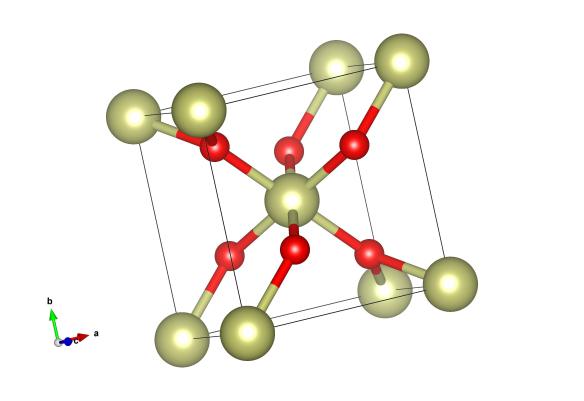Common structure, but rare material – Iridium Oxide
What does it look like?

Iridium Oxide, a rutile-type structure. Here the yellow atoms are Iridium and the red oxygen. Image generated by the VESTA (Visualisation for Electronic and STructural Analysis) software http://jp-minerals.org/vesta/en/
What is it?
Yesterday we introduced the Rutile structure, and today we thought we'd showcase quite a rare material that takes up this structure, Iridium Oxide.
Iridium, like rhodium, is one of the least abundant elements in the crust of the Earth. Part of the reason for this may be that Iridium mixes well with Iron, it is a Siderophile element. Because of this much of the Iridium on Earth is thought to have been, along with much of the planet's iron, dragged into the core.
In fact, the lack of iridium in the crust of the Earth has made for a useful way of tracking how many meteorites have hit the Earth in geological time. Because many types of meteorites are much more abundant in this element, finding areas with a little more iridium in the rocks suggests some extra-terrestrial interference. Iridium abundance was the basis for the hypothesis that a large impact from space wiped out the dinosaurs.
The lack of iridium on Earth is a shame, as it is a very useful metal – the least corrosive of all the elements. In fact getting it to react at all is very difficult, but it can be forced to form iridium oxide from its powdered form. As such iridium oxide has been seen to display some exotic electrical behaviour.
Where did the structure come from?
This crystal structure was taken from a paper that described a number of rutile-type metal dioxide structures. It is #2101854 in the Crystallography Open Database.






